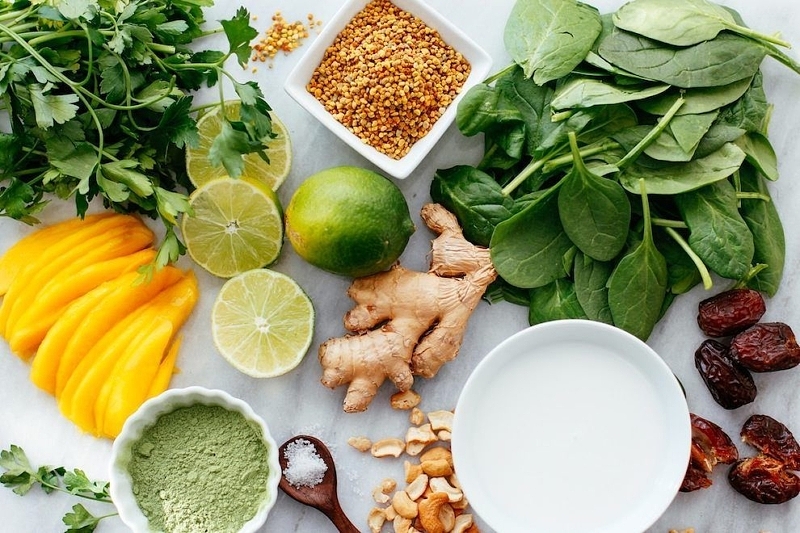As you can imagine, all smoothies are not created equal. People often assume that because they, by and large, have a fruit foundation, that they’re super healthy, but smoothies can actually be loaded with extra sugar in order for them to “taste good.” Also, they may not necessarily offer a balanced blend of macronutrients to fuel your day. If you’re a smoothie fan and you want to ensure that you’re enjoying the healthiest smoothie possible, keep these points in mind when you go to place your order — or even when you make one at home.

How to Order a Healthy Smoothie
1. Start with mineralizing greens.
Green leafy vegetables, known as cruciferous vegetables, are incredibly nutrient dense and should be the base of every smoothie you order. They help fight cancer, boost your immunity, balance hormones, reduce inflammation and so much more. I always like to pinpoint the most greens-rich smoothie on the menu and order that one. It’ll pack the biggest nutrient punch and offer you long-lasting natural energy for the rest of your day.
Even if you’re someone who doesn’t enjoy eating green leafy vegetables, a smoothie is a perfect way to sneak them into your diet. You won’t be able to taste the greens at all with the mixture of fruit and lemon juice — I promise!
2. Opt for low-sugar flavor profiles.
An easy way to replace high-sugar liquids found in smoothies is with cucumbers, beets and carrots. These ingredients can carry the flavor of a smoothie without sugar-laden options like mango, pineapple and papaya, while still offering a refreshing taste and plenty of nutrients.
Cucumbers belong to the melon family and have a high concentration of water, making them a good option to take the place of sugary juices in smoothie blends. They also contain a good amount of fiber and unique antioxidants and polyphenols that have been studied for their effects on reducing some cancers, cardiovascular disease, anti-microbial properties and inflammation.
Along the same vein, beets are naturally sweet, and they are incredibly rich in antioxidants and fiber. Beets are also high in vitamin C, folate and manganese. Not to mention, they make smoothies a beautiful, rich color!
If beets aren’t your jam, carrots are also a nice replacement for fruit because they’re a naturally sweet root vegetable. Carrots have several health benefits from their antioxidant, vitamin and mineral content ranging from anti-inflammatory, anti-cancer and cardiovascular benefits due to the antioxidants. They have also been known to protect vision and overall eye health thanks to the vitamin A and carotenoids.

3. Recognize the protein content.
Does the smoothie include peanut butter or almond butter? Take note of this protein content and how long it satiates you. You may not need a meal for a few hours! Does the smoothie include superfoods like spirulina or chlorella? These superfoods actually pack plant-based proteins, so there’s no need to pile on additional protein. I talk in-depth here about 10 plant-based proteins you should be eating — it’s a great resource to recognize the protein on a smoothie menu!
If you’re interested in learning more about the tools and strategies I use with clients to build the foundation of living well, check out the Live Whole and Eat Well Blueprint. You’ll receive tips on mindful eating, workout nutrition, portion control and more. Plus you’ll find grocery shopping lists and resources about the basics of meal planning, and goal-setting sheets to help you stay accountable.
Live well!
********
Be sure to download the free SB App and get access to all of the best restaurants, shopping, events, articles and more!


















